

|
 |
Climber (The) AKA L'ambizioso (Blu-ray)
[Blu-ray]
Blu-ray B - United Kingdom - Arrow Video Review written by and copyright: Paul Lewis (19th May 2017). |
|
The Film
 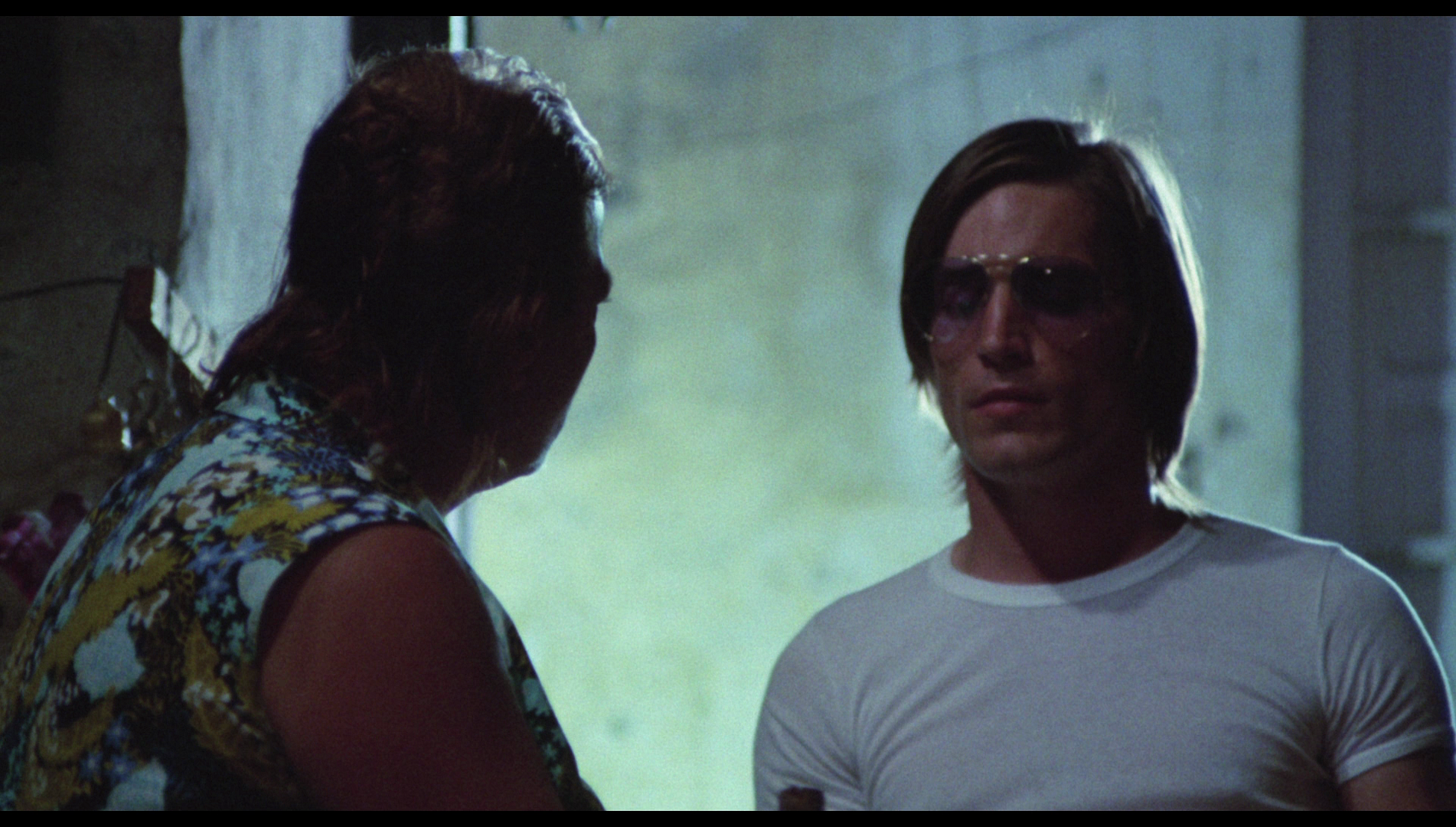 L’ambizioso / The Climber (Pasquale Squitieri, 1975) L’ambizioso / The Climber (Pasquale Squitieri, 1975)
Pasquale Squitieri’s 1975 crime picture L’ambizioso (released in the US as The Climber), constructed as a vehicle for former Andy Warhol superstar ‘Little’ Joe Dallesandro during his years in the wilderness of Italian cinema, was intended to form part of a loose trilogy of films that also included Squitieri’s I guappi (Blood Brothers, 1974) and Camorra (Gang War in Naples, 1974). Camorra and I guappi were relatively successful with audiences, but L’ambizioso was a ‘flop’. All three films in this loose trilogy could broadly be labelled examples of the poliziesco all’italiana (Italian-style police/crime film), sometimes referred to by English-speaking fans by the originally pejorative label poliziotteschi. Coinciding with the anni di piombo (the ‘Years of Lead’) that followed the Piazza Fontana bombing in 1968, the poliziesco all’italiana emerged in the early 1970s and remained popular throughout the decade. The first ‘true’ poliziesco all’italiana is often cited as Steno’s La polizia ringrazia (Execution Squad, 1972), but in truth the subgenre’s roots can be traced to crime-themed cine-inchieste (semidocumentary ‘investigation’ films) such as Francesco Rosi’s Salvatore Giuliano (1962). Much like American films noir of the 1940s and 1950s, the poliziesco pictures could generally be identified by a focus on either the polizia (police) or banditi (bandits): exemplified by films like Marino Girolami’s Roma violenta (Violent Rome, 1975), the former took their cue from La polizia ringrazia and were sometimes quite reactionary, emphasising the perceived necessity for ‘Dirty Harry’-like tactics against bandits and terrorists; whereas largely inspired by the likes of Salvatore Giuliano, the latter were often left-leaning, sometimes featuring Robin Hood-type bandits, and explored the milieu that engendered and fostered criminal attitudes and behaviours. Examples of films about banditi include Romolo Guerrieri’s Liberi, armati, pericoloso (Young, Violent, Dangerous, 1976); in their focus on young banditi who turn to violence, it’s easy to see this specific subgroup of films about banditi as Italian society’s attempt to come to terms with the motivations of the, predominantly young, radicals associated with paramilitary groups like the Brigate Rossi (Red Brigades) who committed acts of politically-motivated violence during the 1970s. 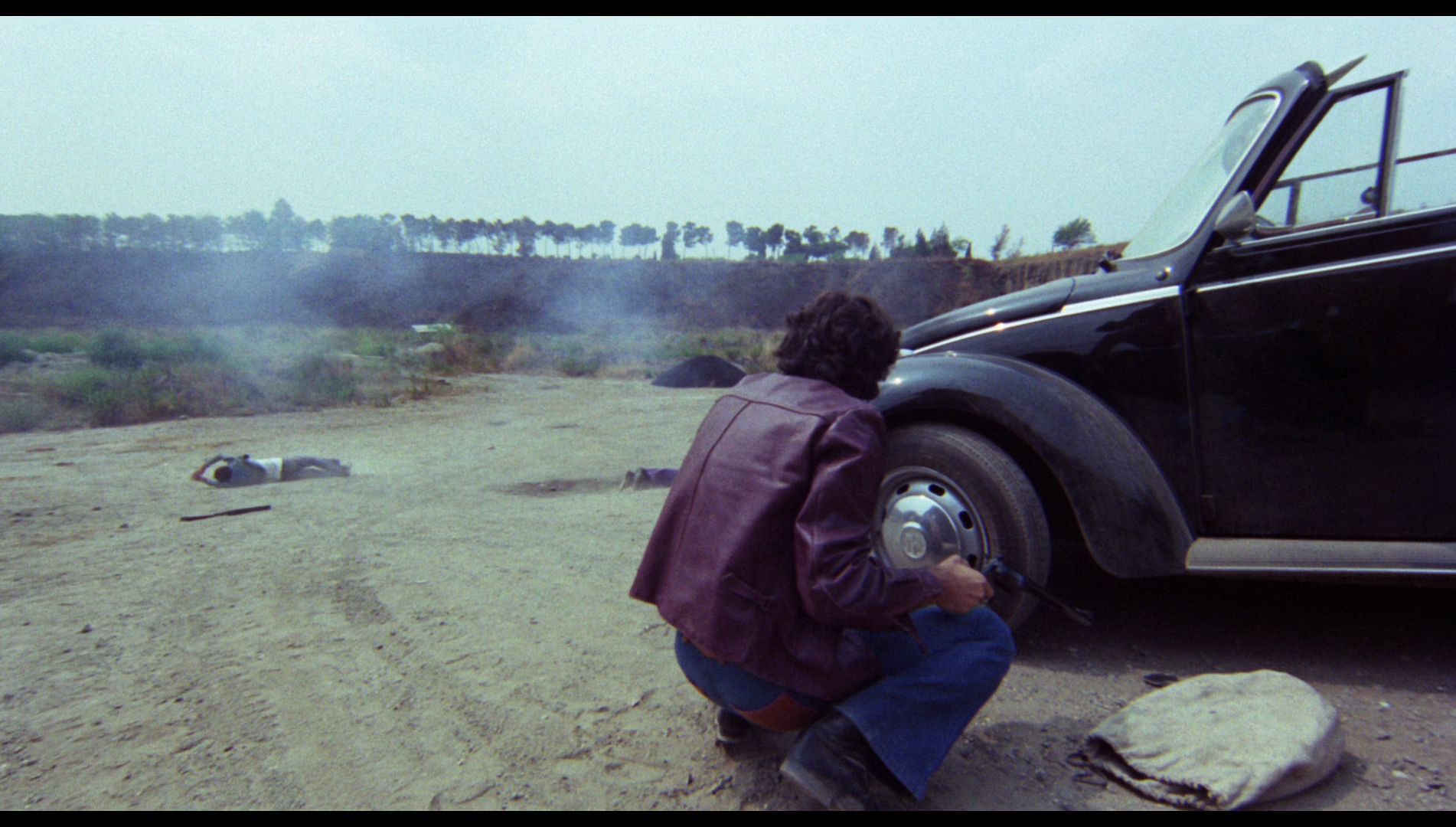 Reflecting on the specific milieu depicted within L’ambizioso and the socio-historical context in which the film was made, Squitieri asserted that by 1975, ‘the Neapolitan Camorra had lost its great leaders and was subject to the Sicilian Mafia, and we mustn’t forget that drug trafficking was increasing in a frightening way. In such a context, Rome represented a good basis for Naples – the Roman underworld was quite poorly organized … as shown 40 years later by Michele Placido in Crime Novel [Romanzo Criminale]’ (Squitieri, quoted in Curti, op cit.: 130). It’s usually said that there are four ages of organised crime in Italy: the Agrarian Age, beginning in 1812, in which the Cosa Nostra was formed in the pre-capitalist Italian countryside, taking the form of organised labour groups that would extort employers in order to attain increases in pay and improvement in living conditions; the Age of Mobilisation, during which the Cosa Nostra migrated from the countryside to the towns and cities; the Age of Drugs/Narcotics, usually cited as taking place in 1973-4; and the Age of Business, beginning in the mid-1980s, in which internal conflicts led to a decline in the importance of narcotics for the Cosa Nostra and high-ranking figures within the world of organised crime sought to invest in ‘legitimate’ businesses (for example, international trade or the preparations for the 1990 World Cup) (see Battaglia & Zecchini, 1999). Like many other contemporaneous Italian crime films that focused on banditi (for example, Ferdinando Baldi’s Afyon oppio/The Sicilian Connection, 1972), L’ambizioso offers a snapshot of organised crime in Italy during the Age of Drugs, when the organised crime gangs were becoming involved in the trafficking of opiates and heroin in the era of the ‘French Connection’ and, later, the ‘Sicilian Connection’, and the code of omertà became increasingly important. Reflecting on the specific milieu depicted within L’ambizioso and the socio-historical context in which the film was made, Squitieri asserted that by 1975, ‘the Neapolitan Camorra had lost its great leaders and was subject to the Sicilian Mafia, and we mustn’t forget that drug trafficking was increasing in a frightening way. In such a context, Rome represented a good basis for Naples – the Roman underworld was quite poorly organized … as shown 40 years later by Michele Placido in Crime Novel [Romanzo Criminale]’ (Squitieri, quoted in Curti, op cit.: 130). It’s usually said that there are four ages of organised crime in Italy: the Agrarian Age, beginning in 1812, in which the Cosa Nostra was formed in the pre-capitalist Italian countryside, taking the form of organised labour groups that would extort employers in order to attain increases in pay and improvement in living conditions; the Age of Mobilisation, during which the Cosa Nostra migrated from the countryside to the towns and cities; the Age of Drugs/Narcotics, usually cited as taking place in 1973-4; and the Age of Business, beginning in the mid-1980s, in which internal conflicts led to a decline in the importance of narcotics for the Cosa Nostra and high-ranking figures within the world of organised crime sought to invest in ‘legitimate’ businesses (for example, international trade or the preparations for the 1990 World Cup) (see Battaglia & Zecchini, 1999). Like many other contemporaneous Italian crime films that focused on banditi (for example, Ferdinando Baldi’s Afyon oppio/The Sicilian Connection, 1972), L’ambizioso offers a snapshot of organised crime in Italy during the Age of Drugs, when the organised crime gangs were becoming involved in the trafficking of opiates and heroin in the era of the ‘French Connection’ and, later, the ‘Sicilian Connection’, and the code of omertà became increasingly important.
In Naples, small-time hoodlum Aldo (Joe Dallesandro), the son of an Italian prostitute and an American sailor, is betrayed by his boss Don Enrico (Raymond Pellegrin) after the ambitious Aldo tries to pressure his customers into paying higher prices for smuggled cigarettes. Aldo cannot see the harm in this, but Don Enrico is angered at Aldo’s attempts to disrupt the market for such product. He has Aldo beaten up, and Aldo’s treasured motorbike is destroyed. 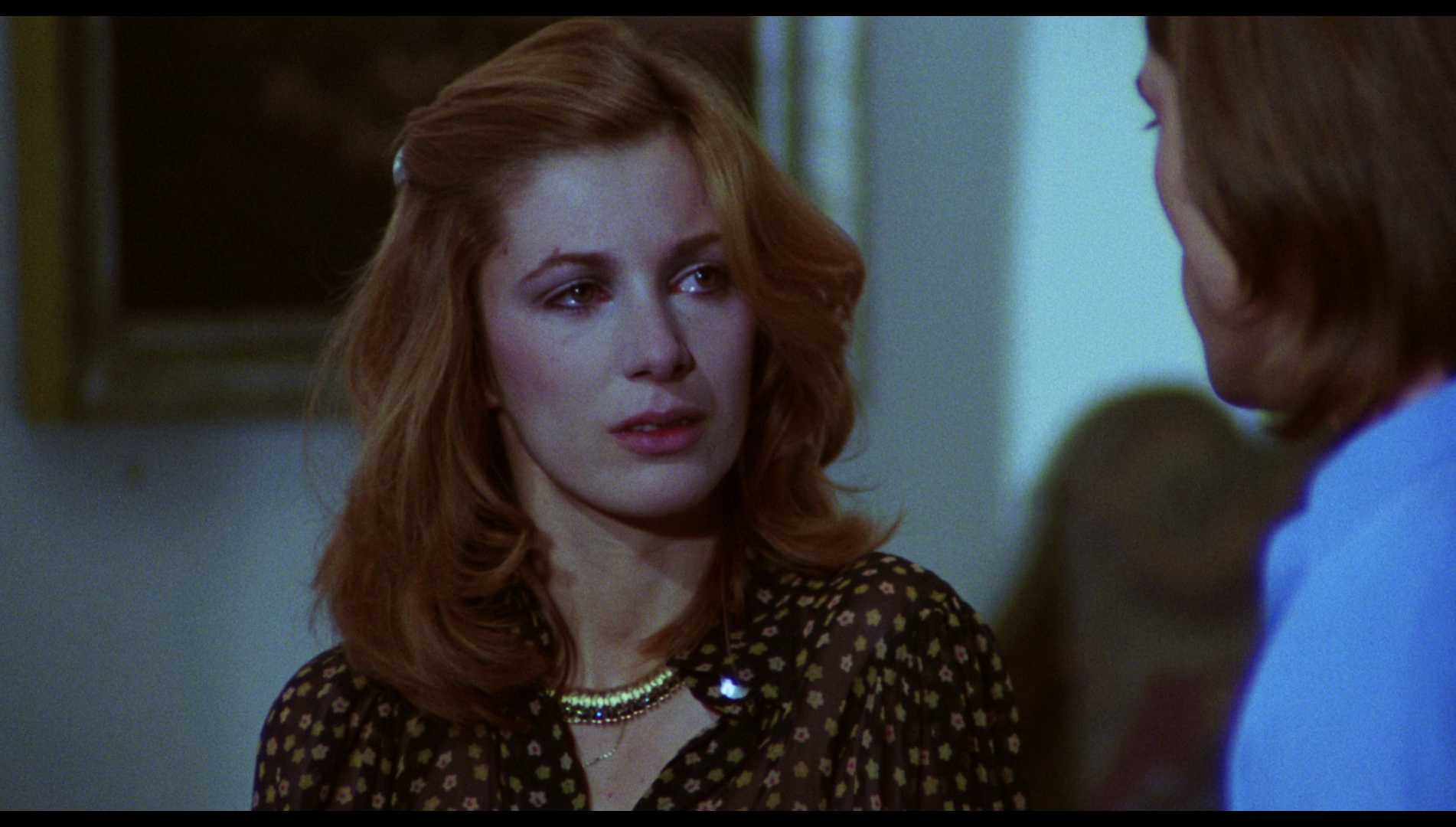 The badly-beaten Aldo is dumped by a road outside Naples. He hitches a lift with Luciana (Stefania Casini, who was involved romantically with Joe Dallesandro off-screen at the time this film was made), who is heading back to her home in Rome. Luciana offers Aldo a room for the night, but the pair soon become romantically involved. In Rome, Aldo also tracks down a former friend, Carlo (Ferdinando Murolo). Carlo is married with a young child, and he has now ‘gone straight’. The badly-beaten Aldo is dumped by a road outside Naples. He hitches a lift with Luciana (Stefania Casini, who was involved romantically with Joe Dallesandro off-screen at the time this film was made), who is heading back to her home in Rome. Luciana offers Aldo a room for the night, but the pair soon become romantically involved. In Rome, Aldo also tracks down a former friend, Carlo (Ferdinando Murolo). Carlo is married with a young child, and he has now ‘gone straight’.
Aldo is desperate to make some quick money, and Carlo points Aldo in the direction of small-time crook Corrado. Corrado asks Aldo for his assistance in stealing a suitcase filled with diamonds as it is being transferred from its current owner to its buyer (later revealed to be Don Enrico’s gang). Aldo asks Carlo for his help in carrying out this theft; Carlo initially refuses but reluctantly agrees to help his old friend. However, unbeknownst to the pair, Corrado has already made arrangements to double-cross Aldo and Carlo, attacking the pair outside – after they have lifted the suitcase – and stealing the goods from them. Aldo and Carlo steal the suitcase and are attacked by Corrado’s associates but manage to fend them off. Realising they have been double-crossed, Aldo and Carlo flee to the wrecker’s yard where Carlo works; there, they open the suitcase and discover that it contains not diamonds but cocaine. At night, searching for the cocaine, Corrado’s goons attack Carlo in his home and, in front of his wife and child, they kill Carlo, throwing his corpse from the window to the street below. Aldo allows himself to be caught by Don Enrico’s thugs. Aldo offers to return the drugs to Don Enrico, in return for a chance to avenge Carlo’s death by killing Corrado. Don Enrico agrees. Afterwards, Aldo plots to form his own gang, recruiting a group of boxers and using a list of clients stolen from Corrado – which identifies those who have sought Corrado’s services in acquiring sex and drugs – and blackmailing the men whose names appear on it. Aldo recruits more men, including a French enforcer named Bernard (Tony Askin), who ‘does it because he hates people’. With his new crew, Aldo returns to Naples and, teaming up with his friend Ciriaco (Benito Artesi), wages war against Don Enrico, beginning with the nightclubs outside the city where American sailors gather. Aldo stages acts of violence at these nightclubs before running a ‘protection’ racket, offering the nightclub owners protection against further acts of destruction against their properties. Aldo’s influence grows, and eventually he has the power to take on Don Enrico’s gang directly. This unleashes a tide of violence upon Naples. However, Aldo has one weakness: his lover Luciana.  Aldo was originally to have been played by Fabio Testi, the stuntman-turned actor, but Squitieri decided to approach Joe Dallesandro for the part after watching the Andy Warhol-Paul Morrissey films. ‘To me Joe Dallesandro was a myth’, Squitieri said, ‘and I was sure I wouldn’t be able to have him in one of my films, because to me he was unreachable’ (Squitieri, quoted in Curti, op cit.: 130). However, Testi was not right for the part of Aldo, who in the script is said to be the son of an Italian prostitute and an American sailor: ‘Physically, someone like Lou Castel would have been good for The Climber. My main character was not a leader, but a miserable petty thief who lived day by day’ (Squitieri, quoted in ibid.). Squitieri made contact with Dallesandro via a journalist friend, and Dallesandro accepted the role of Aldo (ibid.). Aldo was originally to have been played by Fabio Testi, the stuntman-turned actor, but Squitieri decided to approach Joe Dallesandro for the part after watching the Andy Warhol-Paul Morrissey films. ‘To me Joe Dallesandro was a myth’, Squitieri said, ‘and I was sure I wouldn’t be able to have him in one of my films, because to me he was unreachable’ (Squitieri, quoted in Curti, op cit.: 130). However, Testi was not right for the part of Aldo, who in the script is said to be the son of an Italian prostitute and an American sailor: ‘Physically, someone like Lou Castel would have been good for The Climber. My main character was not a leader, but a miserable petty thief who lived day by day’ (Squitieri, quoted in ibid.). Squitieri made contact with Dallesandro via a journalist friend, and Dallesandro accepted the role of Aldo (ibid.).
Squitieri’s approach was inspired, at least in part, by the cine-inchieste of filmmakers like Francesco Rosi (such as Salvatore Giuliano, 1962): investigative films that, framed in an explicitly political context, explored contemporary social, historical and political issues in a semi- or quasi-documentary manner. Like many of its contemporaries, L’ambizioso takes a semidocumentary approach, depicting Aldo’s ascent through the ranks of the underworld in a manner that emphasises the realism of the locales (for example, the docks and the narrow, winding streets of Naples as depicted in the film’s opening sequences). The film opens at a dockyard in Naples, where boxes filled with smuggled cigarettes are unloaded, and then we follow Aldo as he pressures various ‘customers’ into paying higher prices for his ‘product’. However, Roberto Curti has suggested that what differentiates Squitieri’s films from their immediate models (for example, the cine-inchieste of Rosi) is Squitieri’s ‘tendency to privilege passion over a rational discourse’ (Curti, 2013: 59). Curti quotes Gian Piero Brunetta, the film historian, who claimed that ‘Squitieri’s is an example of a “shouting” cinema, which ignores shades and semitones and does not repress its protest charge’ (Brunette, quoted in ibid.: 59-60). Squitieri apparently hoped to capture something of the spirit of films like Pier Paolo Pasolini’s L’accattone (1961), making a picture ‘that would bear more than a passing resemblance to […] Pasolini’s discourse on the anthropological mutation of the lower classes in contemporary society’ (Curti, op cit.: 130). The overriding theme of L’ambizioso, according to Squitieri, ‘is the ambition of suburban young boys to get access to the city’s wealth and well-being. What penetrates in the ever-growing suburban areas, in fact, is not its well-being but its advertising [….] It’s a cultural problem. Advertising serves consumer society in such a pounding way that it creates a sense of inferiority and frustration in the suburban bands of the population, which makes even more acute the need to get to Eden’ (Squitieri, quoted in ibid.). From the outset, Aldo aspires to ‘make it’ but discovers the cost to his soul is too great. In the film’s opening sequences, Aldo is depicted as ambitious and striving for status and material wealth. His attempts to hustle the buyers of the smuggled cigarettes into paying higher prices is what provokes the anger of Don Enrico. Talking with his friend Ciriaco, Aldo shows contempt for his customers: ‘The Frenchman tried to pull a gun on me’, Aldo says in reference to a restaurateur, ‘But he finally paid up, like they all do. They need the good just like they need to eat. They can’t break the cycle. They’ve got too many debts and deadlines’. When Ciriaco warns Aldo that raising the prices of the smuggled product will cause Don Enrico to lose customers, Aldo asserts simply that ‘That’s his problem’. After being beaten by Don Enrico’s heavies and dumped outside Naples, Aldo heads to Rome; his friend Carlo has previously promised Aldo that in Rome ‘it’s a good life, easy money for everyone’. However, when Aldo arrives in Rome he discovers Carlo living a proletarian existence in a run-down flat, married and with a small child. Carlo tells Aldo that five years ago, rich pickings were to be had but since then ‘Everything’s changed [….] The Sicilians and the Marseillais handle the good stuff. Anyone who tried it on their own is either dead or has left town’. ‘You’ve given in to everyone’, Aldo complains, ‘Isn’t there anyone who counts anymore?’ Aldo rises through the ranks of the underworld, running protection rackets and eventually becoming involved in the market for contraband; however, he’s chasing an empty promise. Towards the end of the film, Luciana pointedly tells Aldo, ‘I’m just a burden to you now [….] I’ve seen you suffer, fight and even kill [….] You’ve got everything you wanted, but it’s still not enough. You’re looking for something that may not even exist – a dream’. 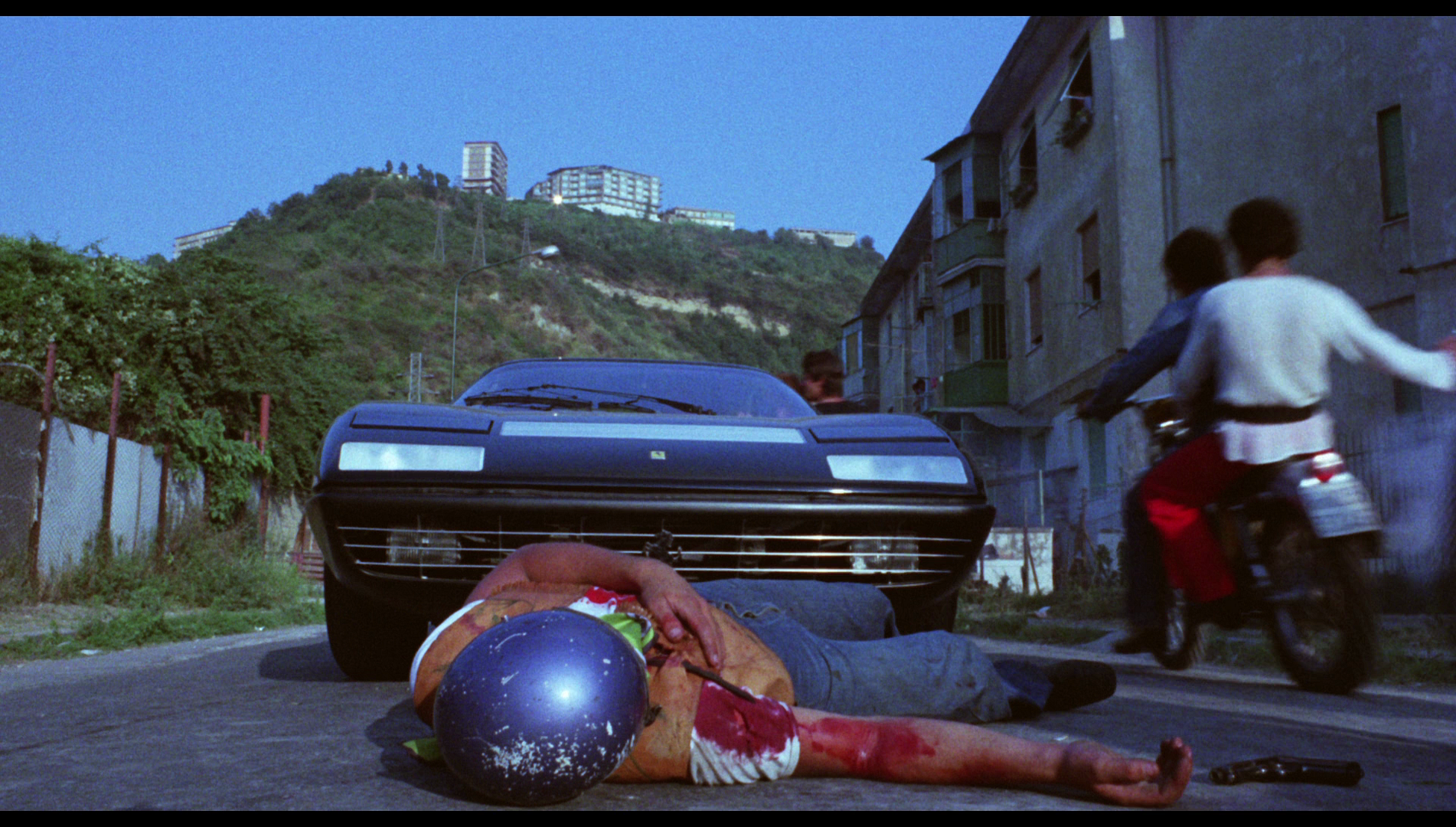 The only alternative to the Sicilian and French groups are youth gangs who roam the streets and commit acts of brutal violence: these teenage gangs would ‘shoot you in the mouth and not think twice’. Carlo warns Aldo about these youths when Aldo first arrives in Rome. However, as the film progresses and Aldo builds his own gang, he displays a similar ruthlessness to these youth gangs, happily employing violence and asking his men to commit murder in order to achieve what Aldo wants them to achieve. The new world, the Third Age of the Mafia is ruled by such new gangs, who deal in a new currency: narcotics. Things have changed; as Corrida tells Aldo on their first meeting, ‘I don’t know if they told you, but we count for nothing now’. When Aldo and Carlo discover the suitcase they have stolen, and which Corrado is so desperate to obtain, includes cocaine, they realise that the drugs have no value for them unless they know someone who can sell them. ‘This stuff is worth nothing to us’, Carlo tells Aldo, ‘In our hands, it’s just powder’. However, Aldo sees this as an opportunity for advancement: ‘It’s our chance’, Aldo asserts in reference to the suitcase, ‘It’s all or nothing’. ‘If we keep it, they’ll skin us alive’, Carlo reasons. ‘I’ll keep it’, Aldo tells him, ‘You stay out of it. Either I die or I make so much money I’ll be rich for the rest of my life’. When Aldo is caught by Don Enrico, Don Enrico reminds Aldo how lacking in value the cocaine is to him: ‘In your hands, that stuff’s just earth, sand, shit’. However, Aldo offers to return the cocaine to Don Enrico, in return for revenge against Corrado: ‘I want two lives’, Aldo says, ‘Mine and the man who double-crossed me’. The only alternative to the Sicilian and French groups are youth gangs who roam the streets and commit acts of brutal violence: these teenage gangs would ‘shoot you in the mouth and not think twice’. Carlo warns Aldo about these youths when Aldo first arrives in Rome. However, as the film progresses and Aldo builds his own gang, he displays a similar ruthlessness to these youth gangs, happily employing violence and asking his men to commit murder in order to achieve what Aldo wants them to achieve. The new world, the Third Age of the Mafia is ruled by such new gangs, who deal in a new currency: narcotics. Things have changed; as Corrida tells Aldo on their first meeting, ‘I don’t know if they told you, but we count for nothing now’. When Aldo and Carlo discover the suitcase they have stolen, and which Corrado is so desperate to obtain, includes cocaine, they realise that the drugs have no value for them unless they know someone who can sell them. ‘This stuff is worth nothing to us’, Carlo tells Aldo, ‘In our hands, it’s just powder’. However, Aldo sees this as an opportunity for advancement: ‘It’s our chance’, Aldo asserts in reference to the suitcase, ‘It’s all or nothing’. ‘If we keep it, they’ll skin us alive’, Carlo reasons. ‘I’ll keep it’, Aldo tells him, ‘You stay out of it. Either I die or I make so much money I’ll be rich for the rest of my life’. When Aldo is caught by Don Enrico, Don Enrico reminds Aldo how lacking in value the cocaine is to him: ‘In your hands, that stuff’s just earth, sand, shit’. However, Aldo offers to return the cocaine to Don Enrico, in return for revenge against Corrado: ‘I want two lives’, Aldo says, ‘Mine and the man who double-crossed me’.
Though enjoyable, L’ambizioso has problems with its pacing: the first half is tense and amplifies its themes; the second half dissipates them in a series of standoffs. (In this sense, the structure of the film arguably anticipates Brian De Palma’s 1983 remake of Scarface.) There are also some outrageous stereotypes: for example, the film makes a direct connection between Corrado’s status as an untrustworthy degenerate and his homosexuality, the Italian dialogue seeing the character frequently referred to via an Italian pejorative that is translated in the English subtitles as as ‘that poof’. From the moment Aldo meets Corrado, the dialogue foregrounds Corrado’s homosexuality, suggesting that Corrado’s interest in Aldo is at least partly sexual. When Aldo kills Corrado, stabbing him to death with a flick-knife, the murder is coded as sexual too, Aldo promising to give Corrado ‘every inch’. This association of homosexuality with underhandedness and deviance is something that crops up in quite a few Italian crime films of the era. On the other hand, L’ambizioso balances its reliance on clichés with an interesting mixture of ‘kitchen sink’-style drama and contemporary ‘fads’: drugs, motocross bikes and motorbike gangs/street gangs. (In Aldo’s use of motocross bikes amongst the members of his crew, the choice of transportation facilitating the gang’s movement through Naples’ narrow streets, L’ambizioso anticipates the special group of motorbike cops that features in Domenico Paolella’s later poliziesco La polizia è sconfitta/Stunt Squad, 1977.)   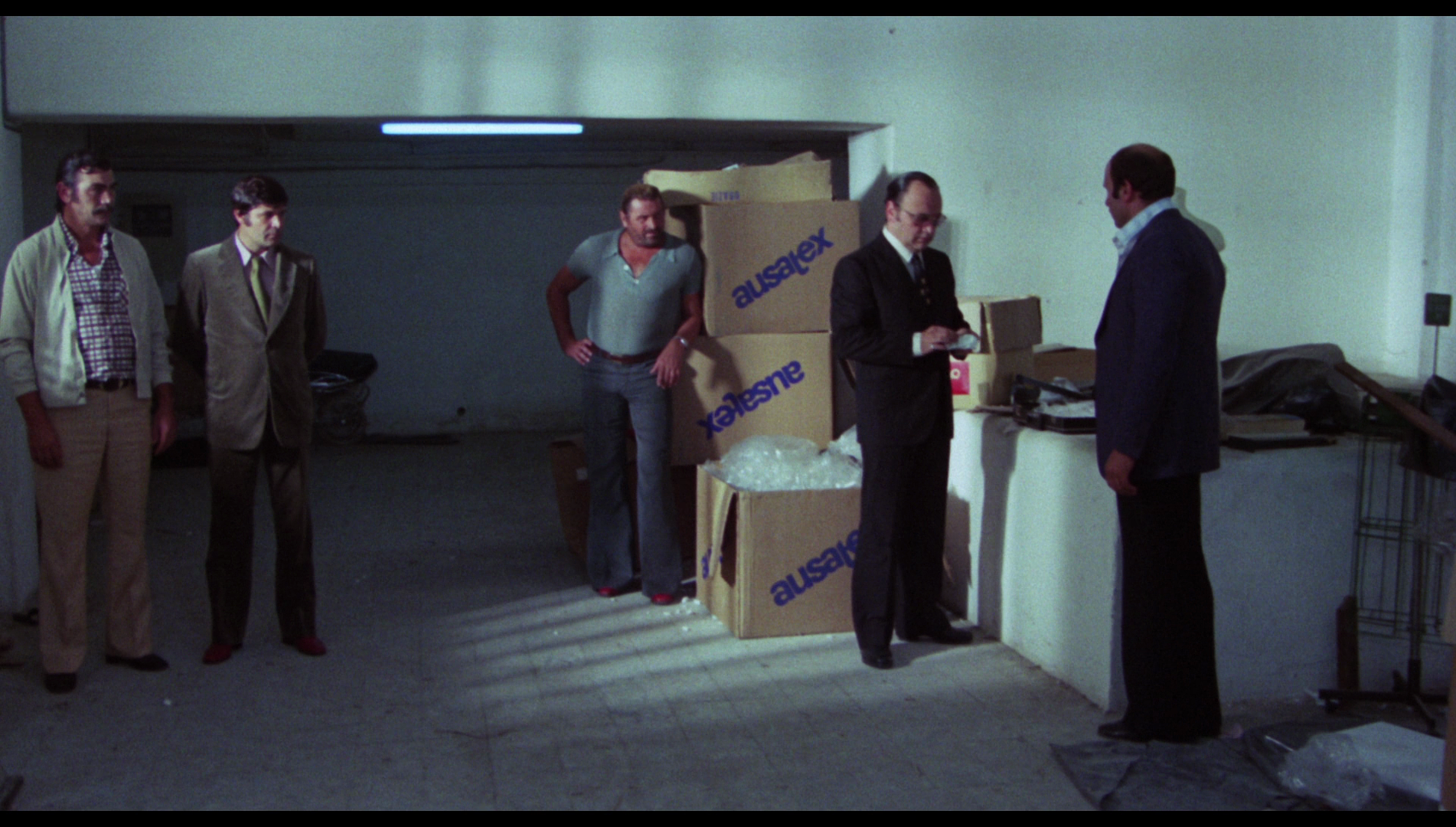
Video
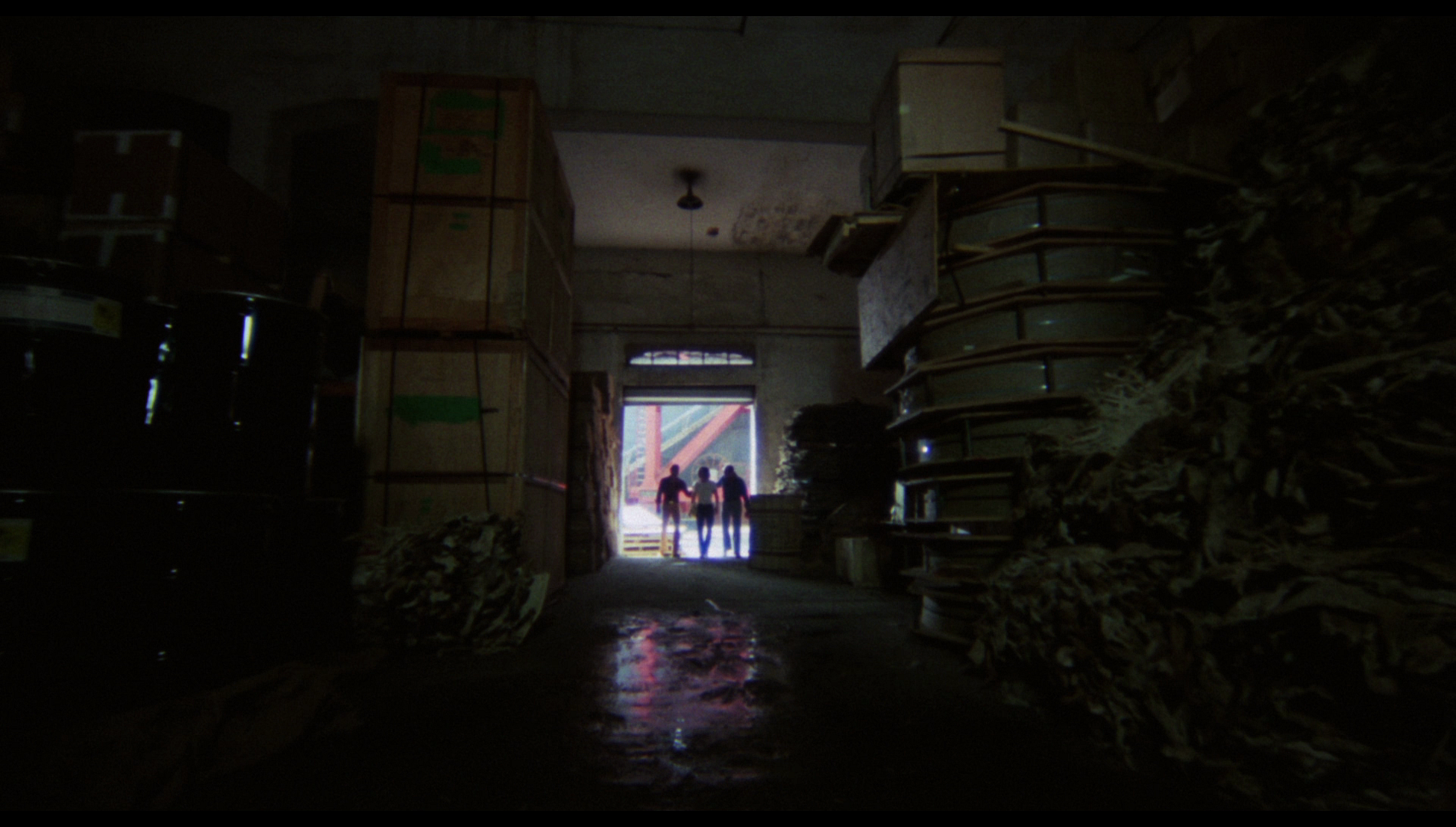 The film is here presented uncut, running 107:30 minutes. The 1080p presentation uses the AVC codec and takes up about 30Gb of space on the dual-layered Blu-ray disc on which it is housed. The film is presented in its original aspect ratio of 1.85:1. The optically processed opening titles sequence looks extraordinarily rough, but things soon improve drastically when the film proper begins. However, L’ambizioso has an inconsistent aesthetic owing to the original photography: some scenes seem to have been shot with lenses that are very sharp at the centre but whose sharpness tapers off towards the periphery of the image, and other scenes seem to have been shot with rudimentary zoom lenses that produce an image that is very soft overall. Nevertheless, this presentation is very ‘true’ and filmlike, regardless of the qualities of the original photography. The presentation retains the structure of 35mm film thanks to a strong encode. There is an excellent level of detail present within the image. Colour reproduction is good – being organic and textured. Contrast is very good too, with the image containing rich midtones, balanced highlights and deep shadows. The film contains many sequences shot in strong Mediterranean light, casting deep shadows and sometimes placing the characters in silhouette. Besides this, some of the interiors are photographed in a very expressionistic manner, with dimly lit interiors or hallways leading to doors or window frames at their end which offer a frame of light. (This sense of a ‘tunnel’ with a light source at the end of it becomes one of the visual leitmotifs of the film, perhaps intended as a metaphor for Aldo’s mindset as a ‘climber’.) All of this footage is handled very well here. The film is here presented uncut, running 107:30 minutes. The 1080p presentation uses the AVC codec and takes up about 30Gb of space on the dual-layered Blu-ray disc on which it is housed. The film is presented in its original aspect ratio of 1.85:1. The optically processed opening titles sequence looks extraordinarily rough, but things soon improve drastically when the film proper begins. However, L’ambizioso has an inconsistent aesthetic owing to the original photography: some scenes seem to have been shot with lenses that are very sharp at the centre but whose sharpness tapers off towards the periphery of the image, and other scenes seem to have been shot with rudimentary zoom lenses that produce an image that is very soft overall. Nevertheless, this presentation is very ‘true’ and filmlike, regardless of the qualities of the original photography. The presentation retains the structure of 35mm film thanks to a strong encode. There is an excellent level of detail present within the image. Colour reproduction is good – being organic and textured. Contrast is very good too, with the image containing rich midtones, balanced highlights and deep shadows. The film contains many sequences shot in strong Mediterranean light, casting deep shadows and sometimes placing the characters in silhouette. Besides this, some of the interiors are photographed in a very expressionistic manner, with dimly lit interiors or hallways leading to doors or window frames at their end which offer a frame of light. (This sense of a ‘tunnel’ with a light source at the end of it becomes one of the visual leitmotifs of the film, perhaps intended as a metaphor for Aldo’s mindset as a ‘climber’.) All of this footage is handled very well here.
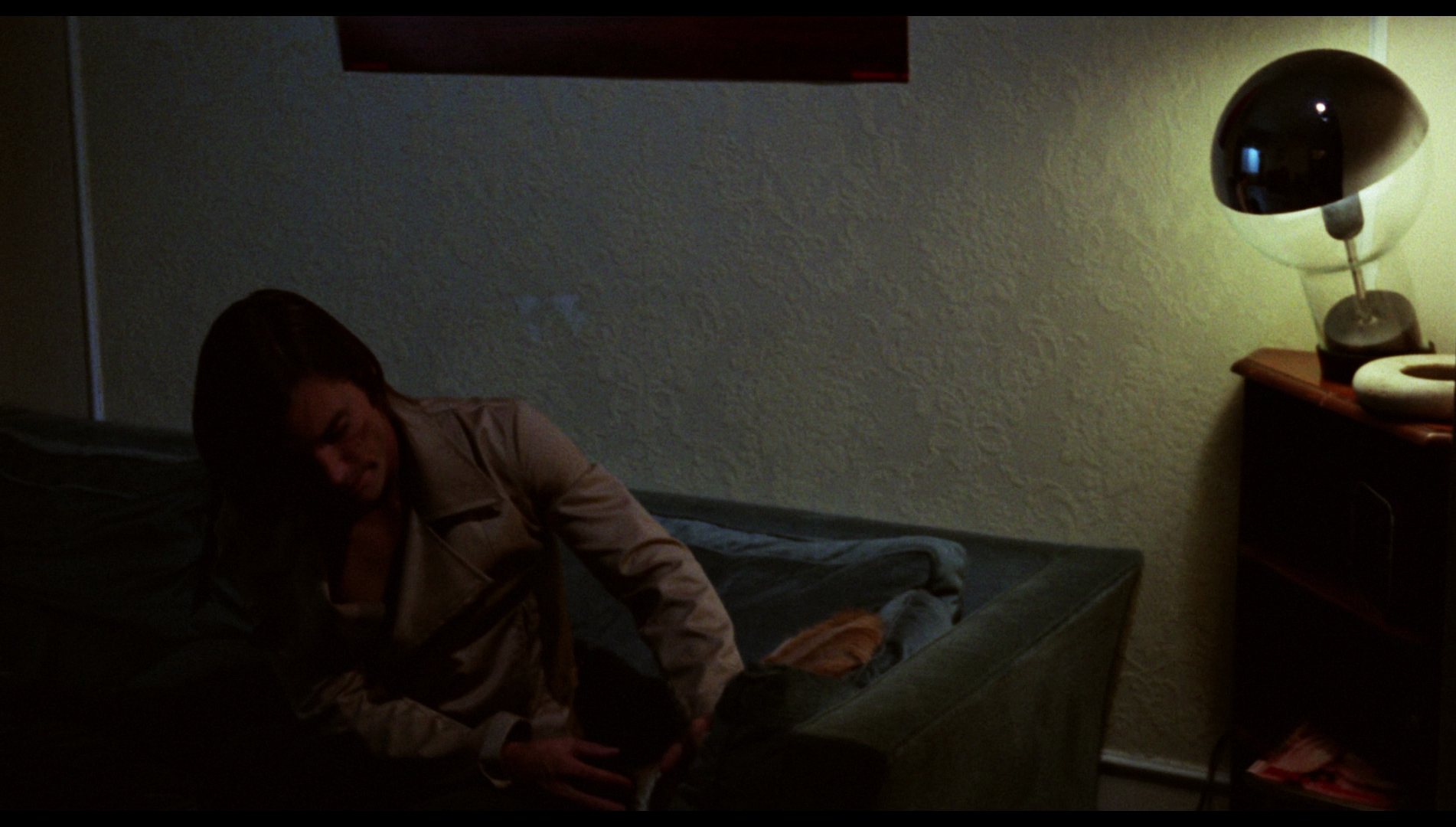 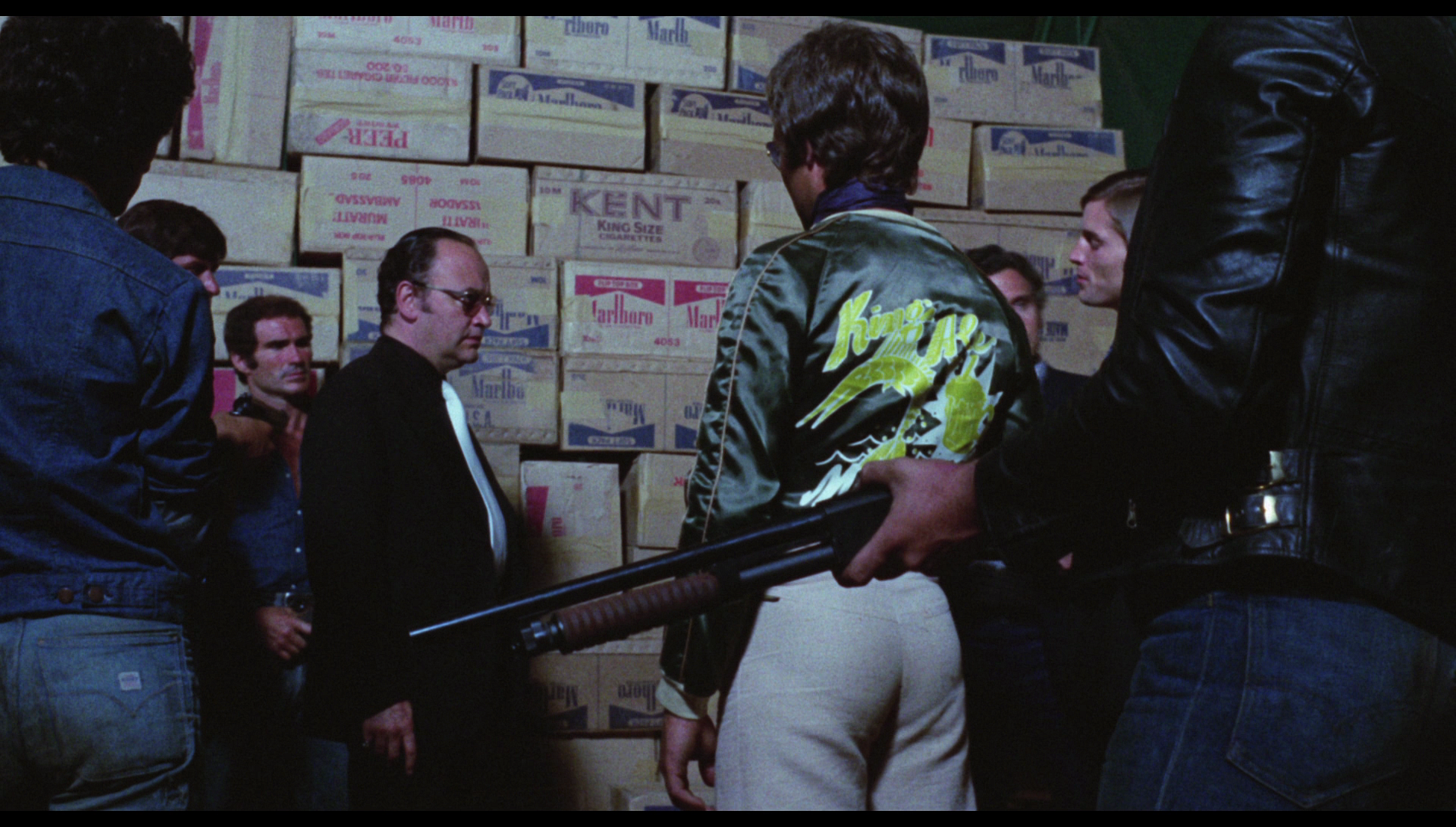 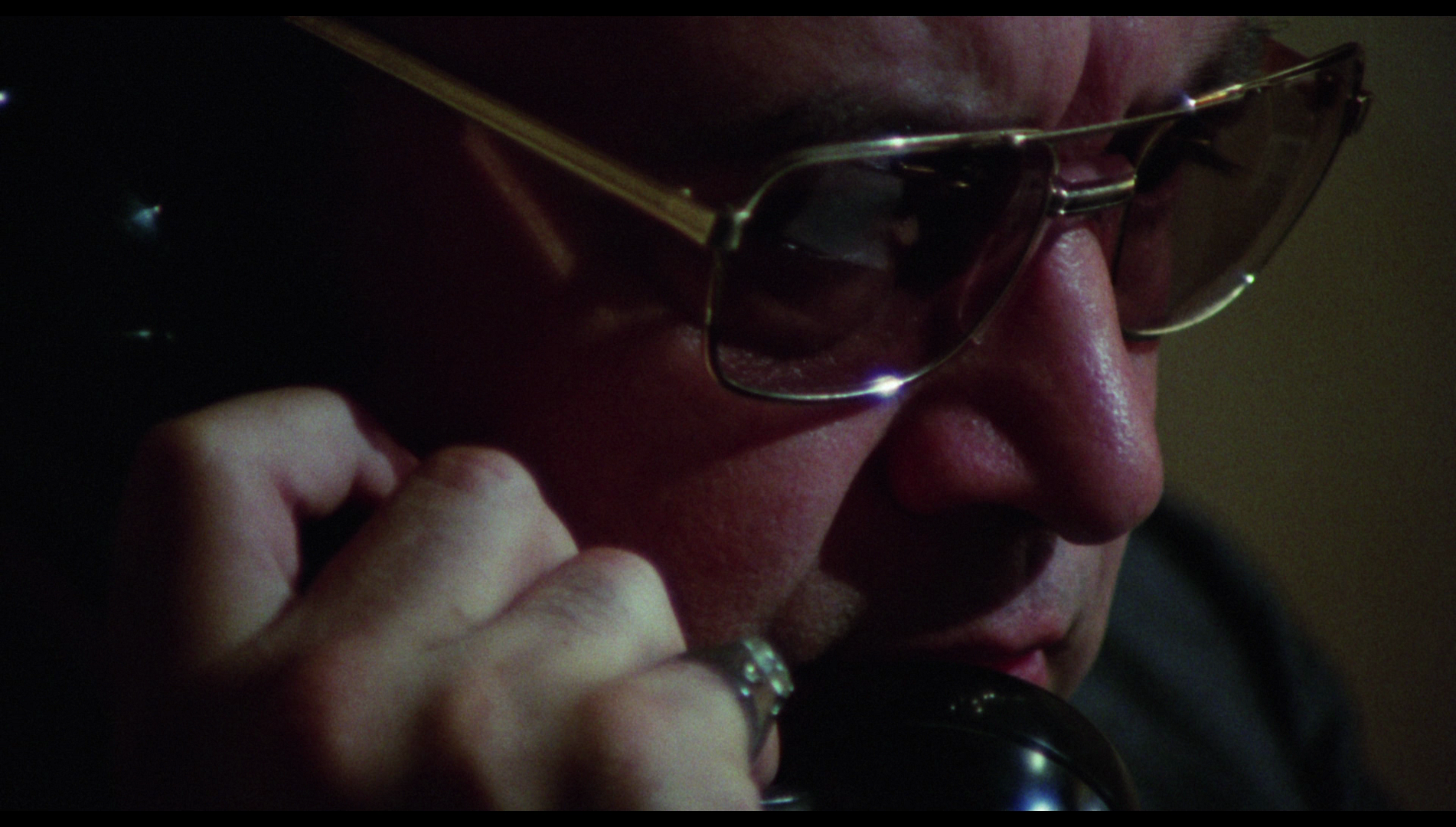
Audio
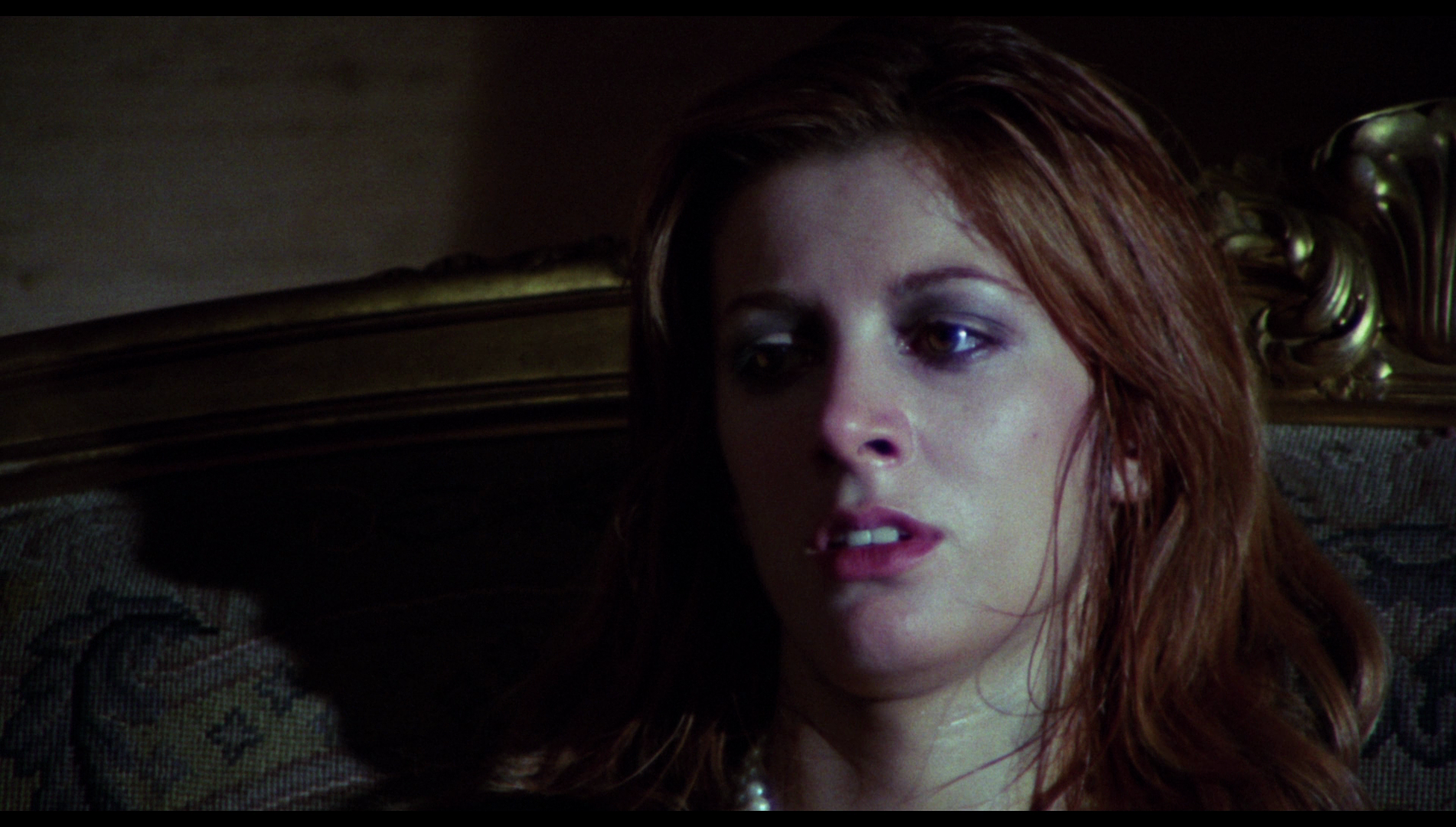 The disc provides the viewer with the option of watching the film with either an Italian DTS-HD MA 1.0 track or an English DTS-HD MA 1.0 track. The Italian track is accompanied by optional English subtitles which are a translation of the Italian dialogue; the English track is accompanied by optional English subtitles for the Hard of Hearing. Both audio tracks are roughly equal in terms of fidelity, the Franco Campanino’s funky Lalo Shifrin-esque score being delivered very well and dialogue always being audible. The English track is perhaps slightly ‘flatter’, but that’s generally true of the English tracks for Italian pictures of this era. There are some substantial differences between the Italian and English dialogue. In the Italian version, when Aldo presses one of his customers into paying higher prices for smuggled cigarettes, she complains that ‘You know we won’t eat if we can’t have them’, whereas in the English track she simply moans that ‘It makes it double’. In the Italian version, she continues to say ‘You and your boss just rob poor people’, Squitieri emphasising the point she is trying to make by cutting away to images depicting the poverty of her surroundings; in the English version, instead of making her impassioned denouncement of Aldo and Don Enrico, the woman simply asserts ‘Pigs!’ When Aldo kills Corrado and begins blackmailing Corrado’s clients, in the Italian version Aldo tells one of the men he is blackmailing that Corrado is dead and ‘I’m his sole heir and I want to collect everything. So pay up!’. In the English version, Aldo quips instead ‘The Queen is dead. Long live the King!’ The disc provides the viewer with the option of watching the film with either an Italian DTS-HD MA 1.0 track or an English DTS-HD MA 1.0 track. The Italian track is accompanied by optional English subtitles which are a translation of the Italian dialogue; the English track is accompanied by optional English subtitles for the Hard of Hearing. Both audio tracks are roughly equal in terms of fidelity, the Franco Campanino’s funky Lalo Shifrin-esque score being delivered very well and dialogue always being audible. The English track is perhaps slightly ‘flatter’, but that’s generally true of the English tracks for Italian pictures of this era. There are some substantial differences between the Italian and English dialogue. In the Italian version, when Aldo presses one of his customers into paying higher prices for smuggled cigarettes, she complains that ‘You know we won’t eat if we can’t have them’, whereas in the English track she simply moans that ‘It makes it double’. In the Italian version, she continues to say ‘You and your boss just rob poor people’, Squitieri emphasising the point she is trying to make by cutting away to images depicting the poverty of her surroundings; in the English version, instead of making her impassioned denouncement of Aldo and Don Enrico, the woman simply asserts ‘Pigs!’ When Aldo kills Corrado and begins blackmailing Corrado’s clients, in the Italian version Aldo tells one of the men he is blackmailing that Corrado is dead and ‘I’m his sole heir and I want to collect everything. So pay up!’. In the English version, Aldo quips instead ‘The Queen is dead. Long live the King!’
Extras
 The disc includes ‘Little Joe’s Adventures in Europe’ (28:39). This interview with Joe Dallesandro focuses on the actor’s work in European cinema during the 1970s, after he was persuaded to travel to Italy to star in Paul Morrissey’s Flesh for Frankenstein (1973) and Blood for Dracula (1973). Dallesandro stayed in Italy, forming a relationship with Stefania Casini (his co-star in Blood for Dracula). Dallesandro suggests that many of his Italian films were made on budgets and shooting schedules roughly comparable to that given to television movies in America. He talks of his desire to make it in ‘real’ movies – ie, more mainstream films than the Warhol-Morrissey movies in which he made his name. It’s an excellent interview, Dallesandro’s offering a vivid account of his years in Italian cinema The disc includes ‘Little Joe’s Adventures in Europe’ (28:39). This interview with Joe Dallesandro focuses on the actor’s work in European cinema during the 1970s, after he was persuaded to travel to Italy to star in Paul Morrissey’s Flesh for Frankenstein (1973) and Blood for Dracula (1973). Dallesandro stayed in Italy, forming a relationship with Stefania Casini (his co-star in Blood for Dracula). Dallesandro suggests that many of his Italian films were made on budgets and shooting schedules roughly comparable to that given to television movies in America. He talks of his desire to make it in ‘real’ movies – ie, more mainstream films than the Warhol-Morrissey movies in which he made his name. It’s an excellent interview, Dallesandro’s offering a vivid account of his years in Italian cinema
Retail versions also include reversible sleeve artwork and a booklet which contains images from the film and a new piece about the picture by Roberto Curti.
Overall
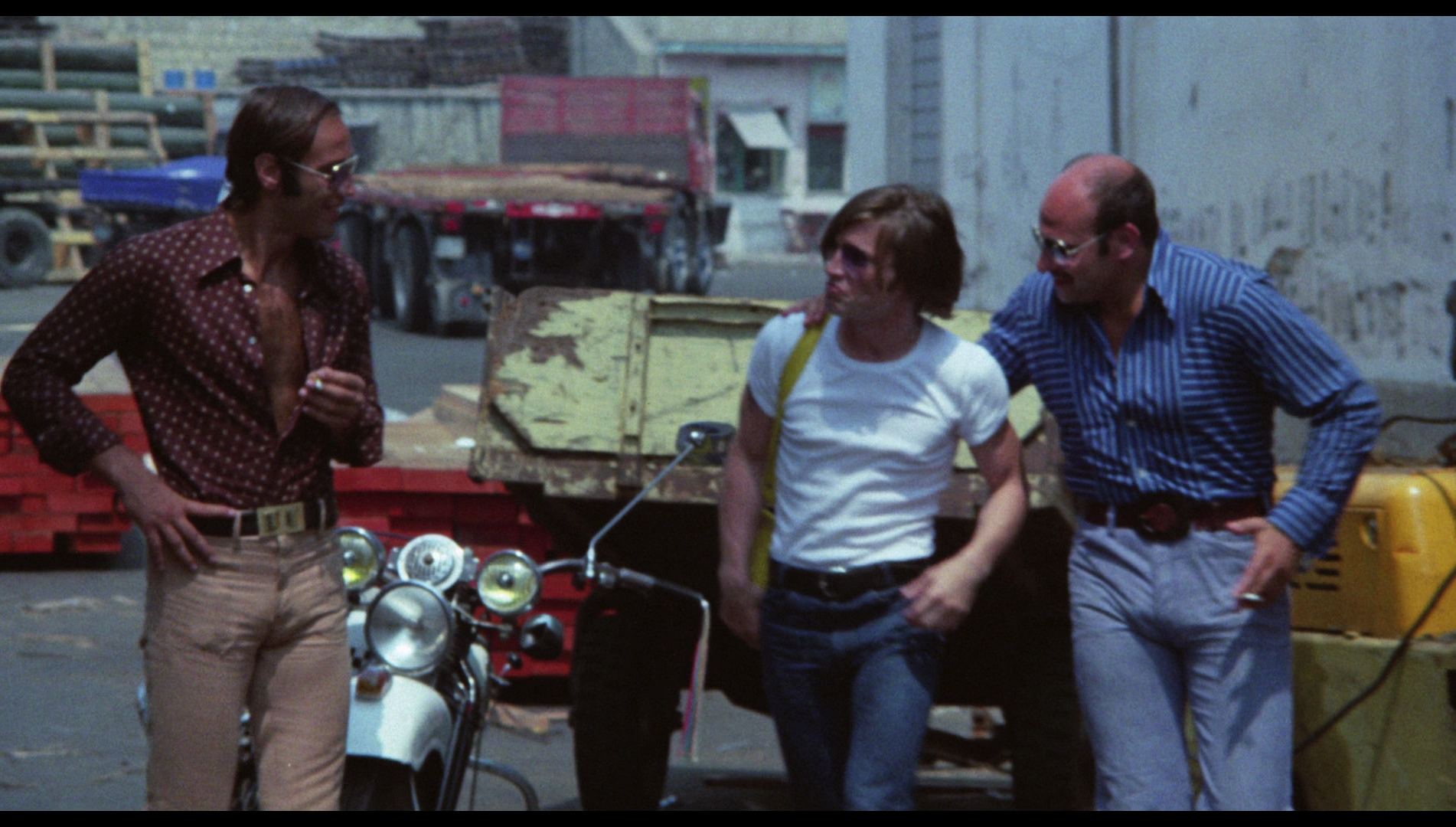 The English title, The Climber, perhaps missells the film in comparison with its original Italian title (L’ambizioso – ‘The Ambitious One’): one might expect a film about mountaineers, perhaps. However, it highlights Aldo’s attempts to climb/rise through the ranks of organised crime, suggesting that alongside such a climb, one should also expect a fall. Although the narrative trajectory of the film is perhaps comparable to American gangster films of the 1930s (for example, William A Wellman’s Public Enemy, 1931), one wonders whether Oliver Stone might have watched L’ambizioso before writing the screenplay for De Palma’s remake of Scarface: the structure of the two films are very similar, and Aldo’s troubled relationship with Luciana is echoed in Tony Montana’s (Al Pacino) passive-aggressive marriage to Elvira (Michelle Pfeiffer). Though a flop in comparison with the other two Squitieri pictures with which it forms a loose trilogy, and overshadowed by superb next film Il prefetto di ferro (I Am the Law, 1977), L’ambizoso is anchored by Joe Dallesandro’s presence and an attempt, albeit one which isn’t realised completely effectively, to channel the verisimilitude of Rosi’s cine-inchieste. The English title, The Climber, perhaps missells the film in comparison with its original Italian title (L’ambizioso – ‘The Ambitious One’): one might expect a film about mountaineers, perhaps. However, it highlights Aldo’s attempts to climb/rise through the ranks of organised crime, suggesting that alongside such a climb, one should also expect a fall. Although the narrative trajectory of the film is perhaps comparable to American gangster films of the 1930s (for example, William A Wellman’s Public Enemy, 1931), one wonders whether Oliver Stone might have watched L’ambizioso before writing the screenplay for De Palma’s remake of Scarface: the structure of the two films are very similar, and Aldo’s troubled relationship with Luciana is echoed in Tony Montana’s (Al Pacino) passive-aggressive marriage to Elvira (Michelle Pfeiffer). Though a flop in comparison with the other two Squitieri pictures with which it forms a loose trilogy, and overshadowed by superb next film Il prefetto di ferro (I Am the Law, 1977), L’ambizoso is anchored by Joe Dallesandro’s presence and an attempt, albeit one which isn’t realised completely effectively, to channel the verisimilitude of Rosi’s cine-inchieste.
The photography within L’ambizioso is quite rough and ready at times, seemingly owing to the qualities of the lenses used during the production. Nevertheless, Arrow’s Blu-ray presentation of the film is very pleasing and film-like. The Italian and English dialogue is extremely different in places, with the former being stronger in some sequences and the latter carrying more weight in others. This is a film that’s worth watching in both Italian and English, as each experience is rather different. It’s a pleasing presentation of an often overlooked film, and the interview with Dallesandro is also excellent. For fans of Italian crime pictures, Arrow’s The Climber comes with a strong recommendation. References: Curti, Roberto, 2013: Italian Crime Filmography: 1968-1980. London: McFarland Battaglia, Letizia & Zecchini, Franco, 1999: Chroniques Siciliennes. Arles: Actes Sud 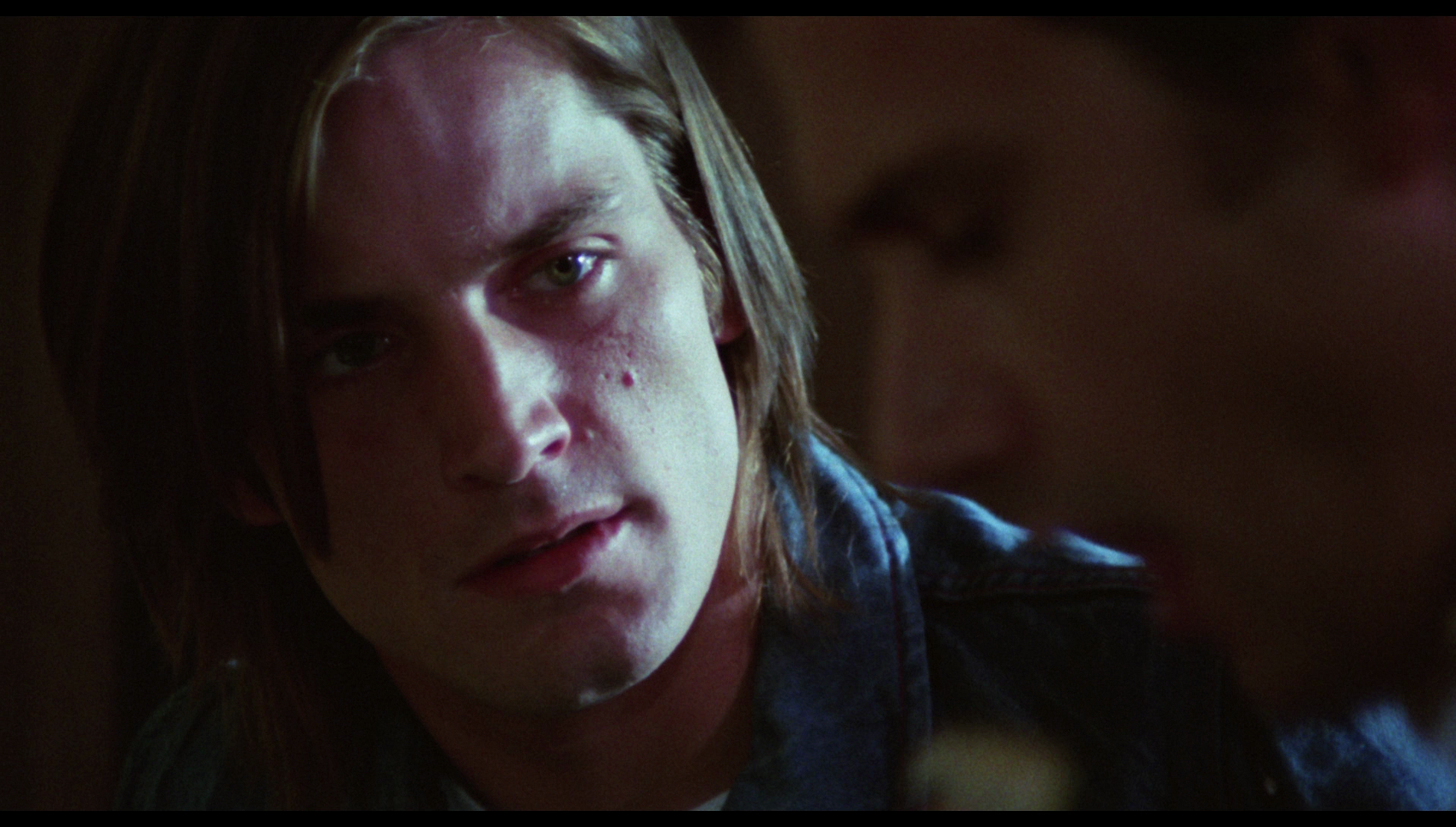


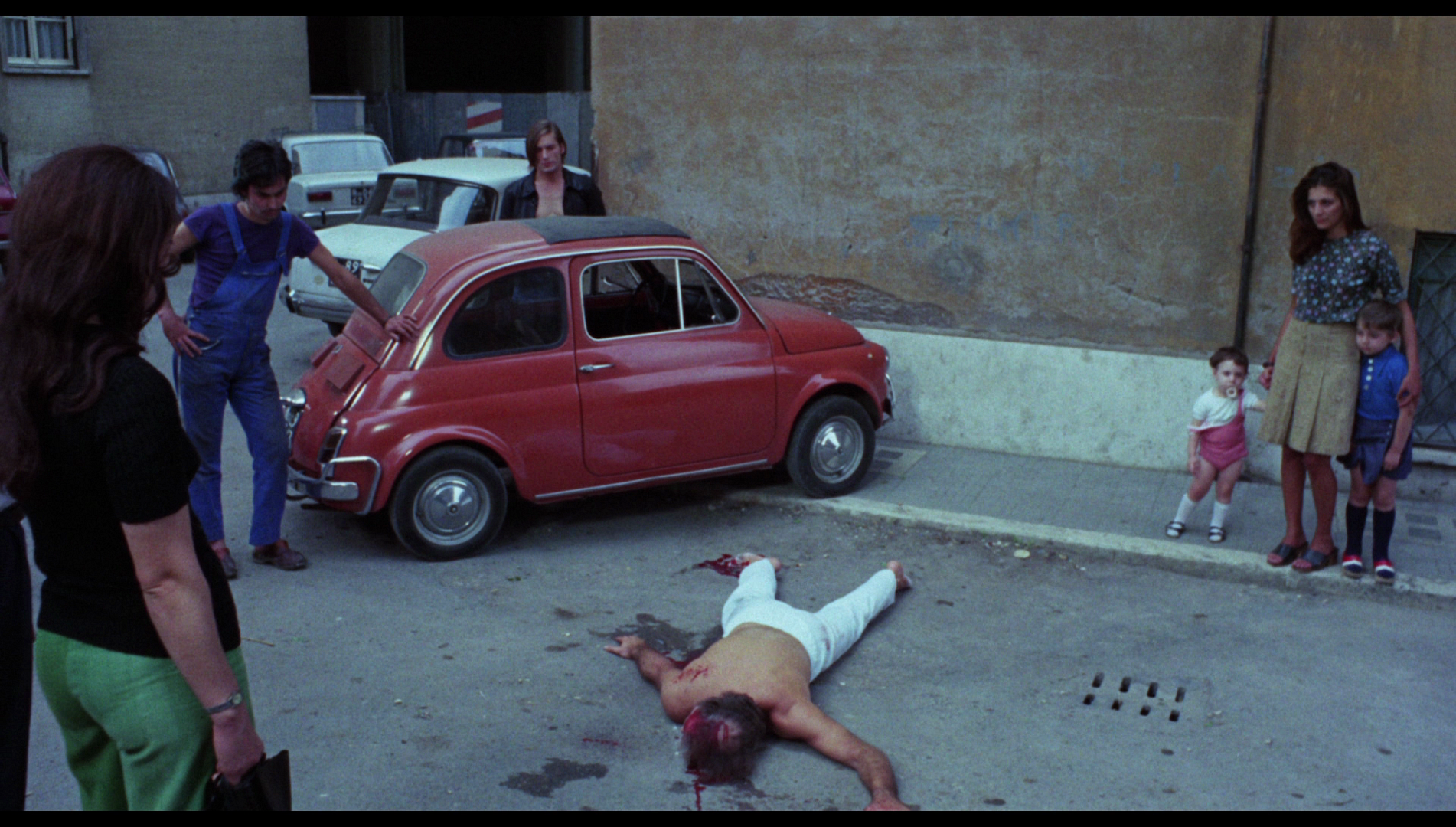

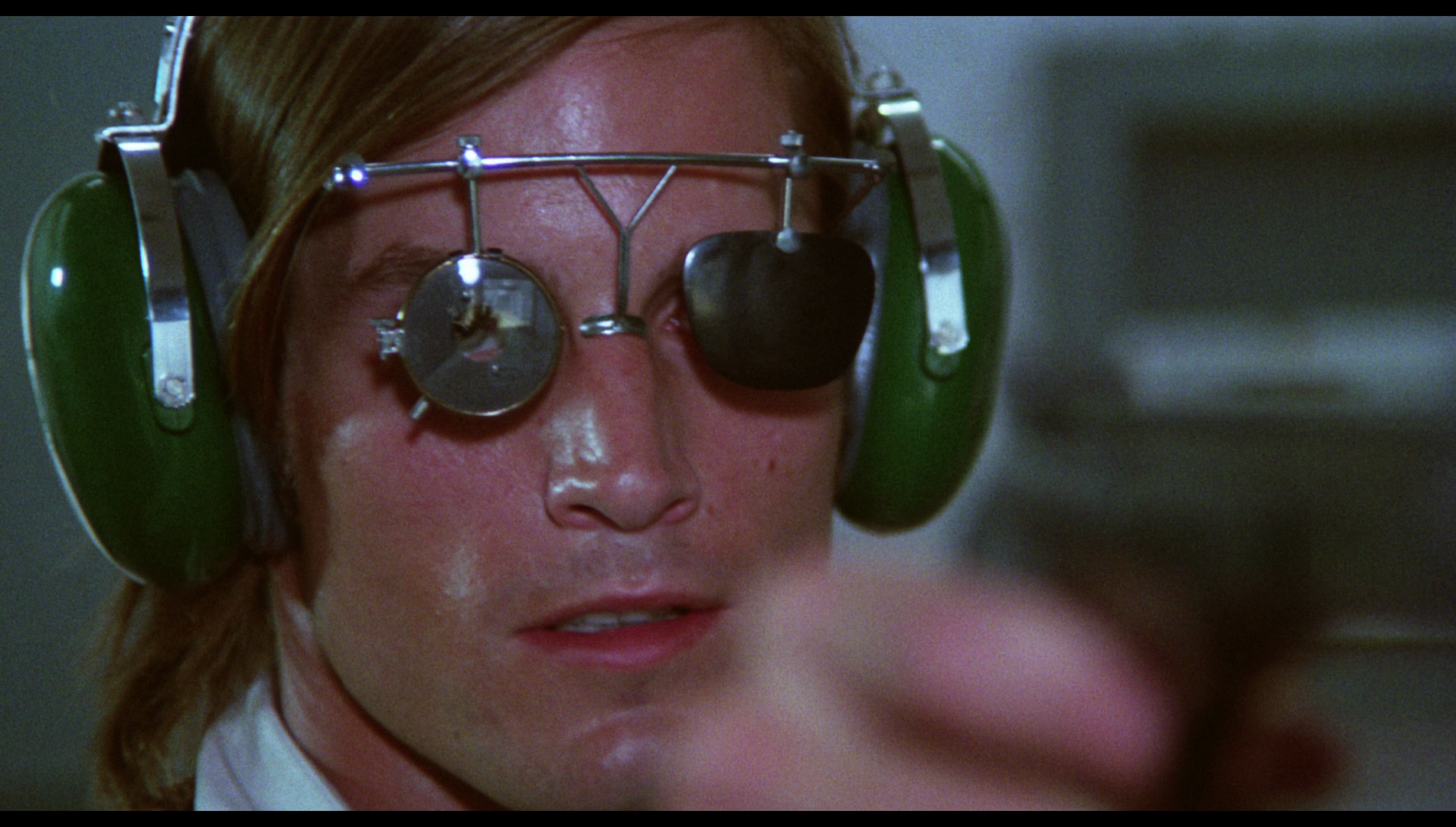
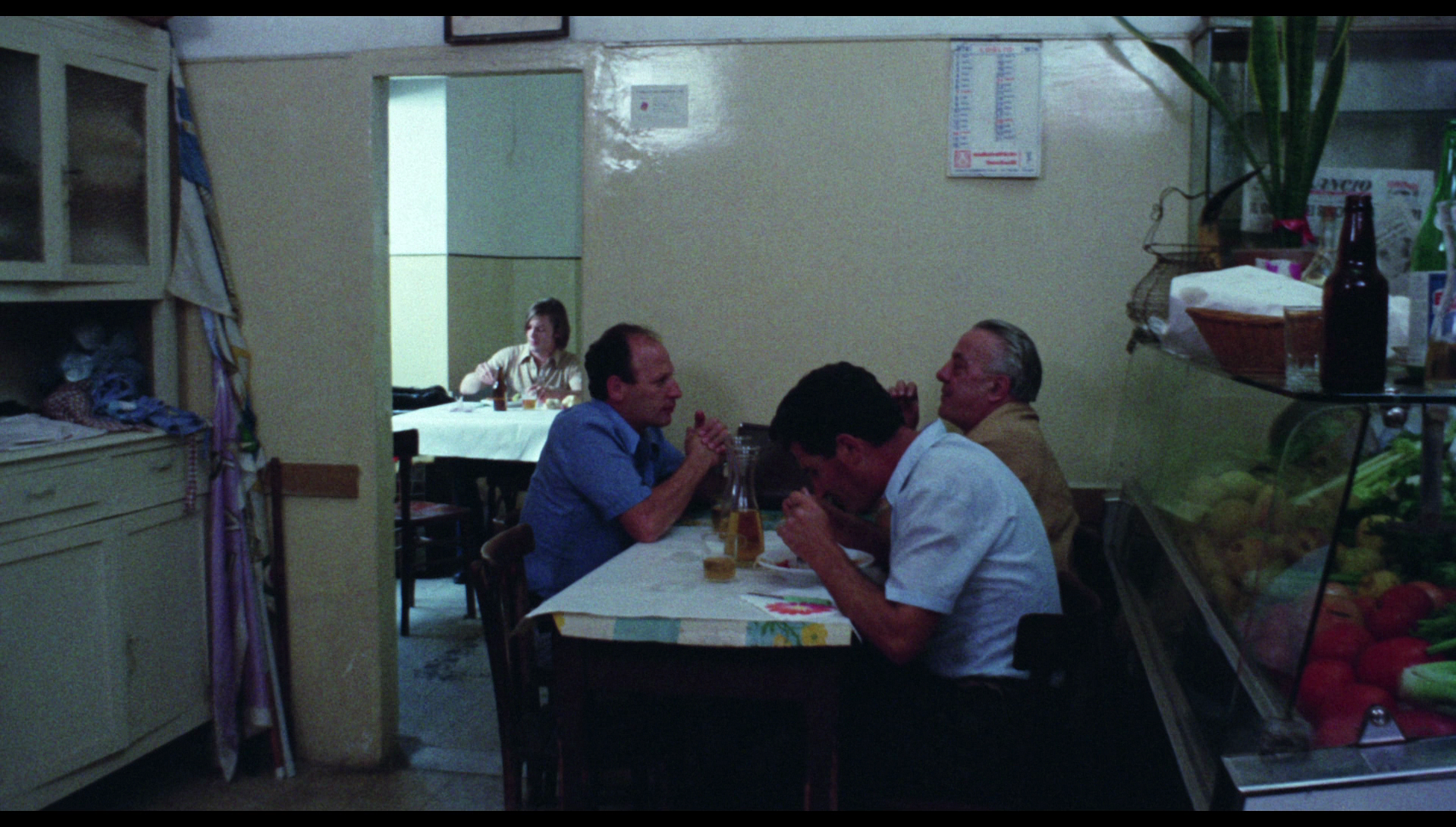
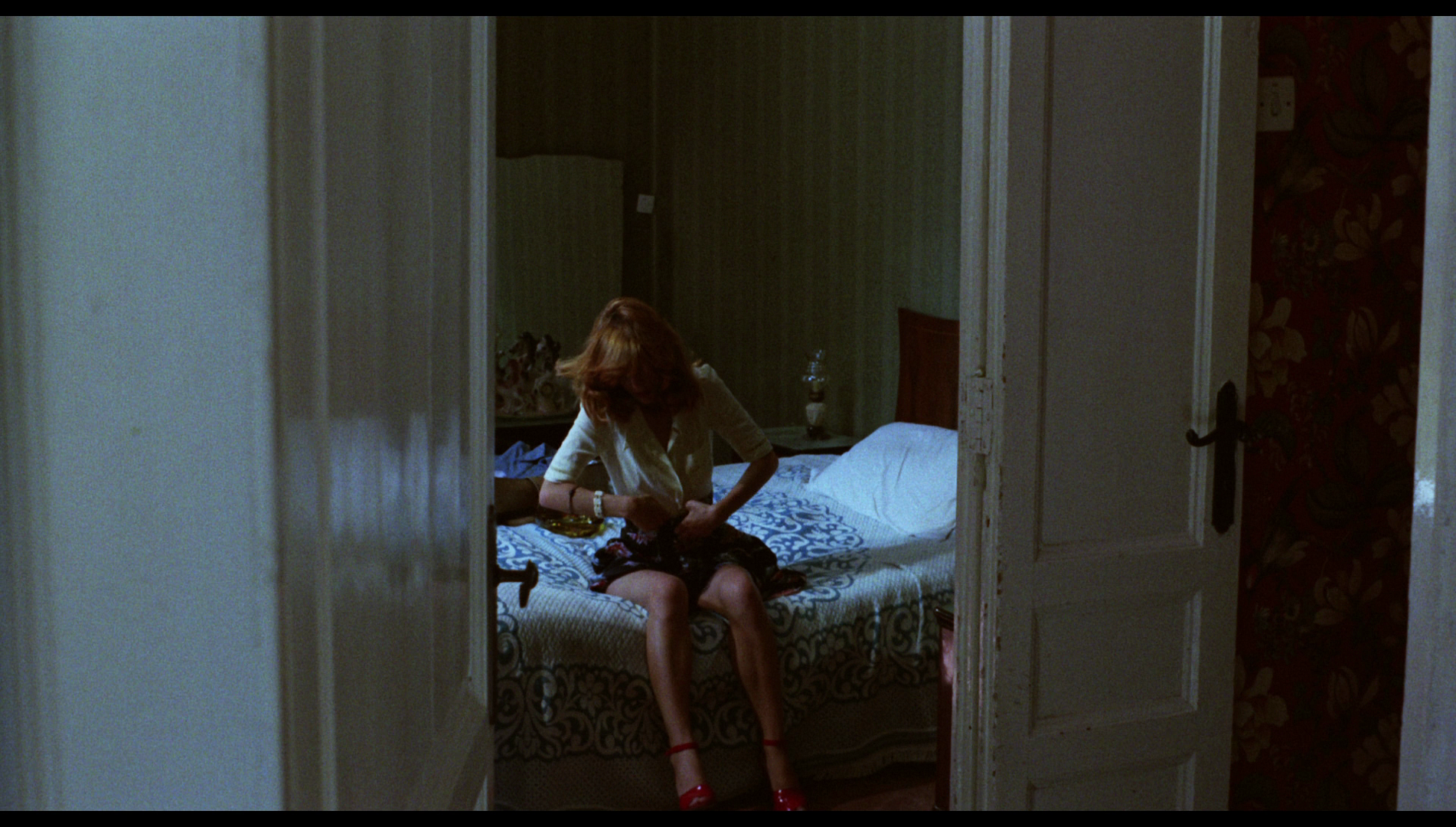
|
|||||

|